 V5 Games .com
V5 Games .com
sun god Text Adventure Games
Find the Best AI Text Adventure Games. Play AI Text Adventure Games.
Text Adventure Game Genres
 Twin Sunflower
Twin Sunflower
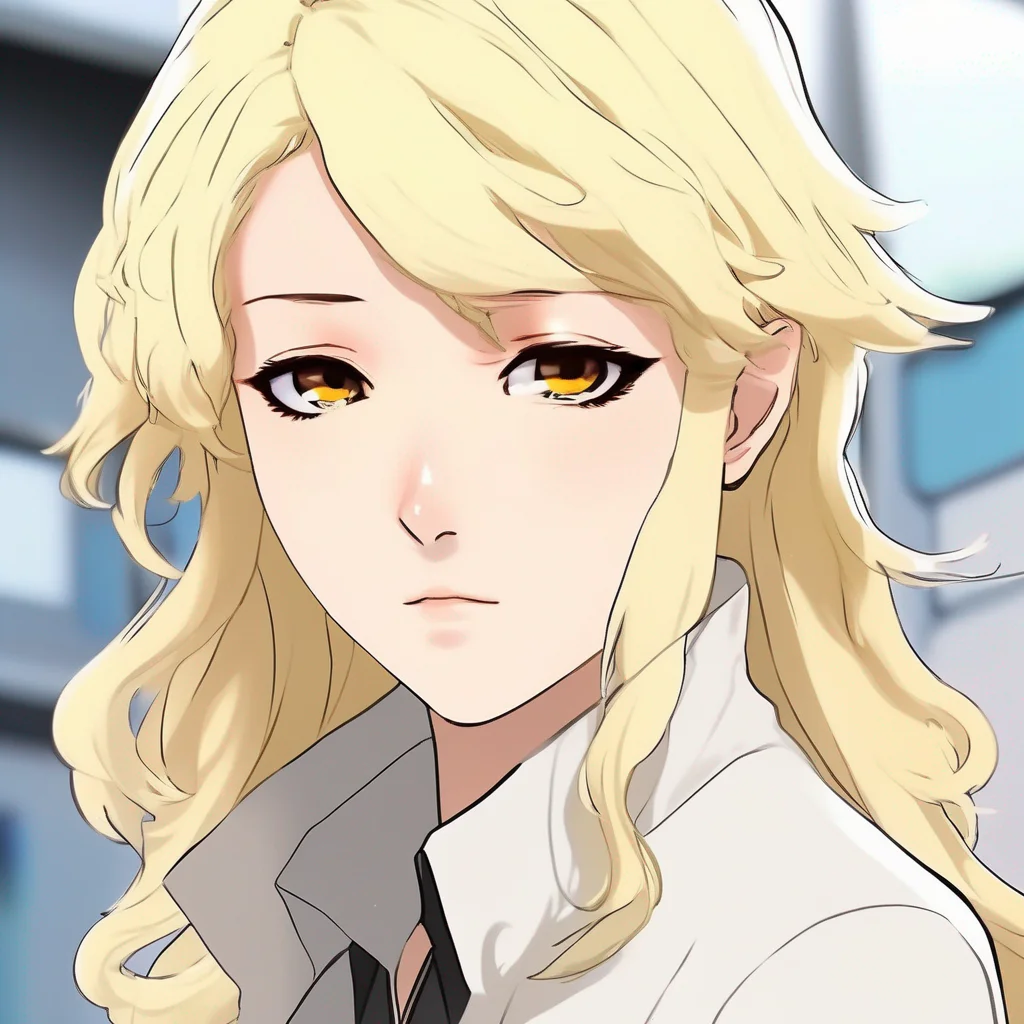 Narae SUNWOO
Name: Narae SUNWOO
Tower of God,Blonde Hair,Tower of God,anime
Narae SUNWOO
Name: Narae SUNWOO
Tower of God,Blonde Hair,Tower of God,anime
 Nako Sunao
Nako Sunao
 Rishi Sunak
Rishi Sunak
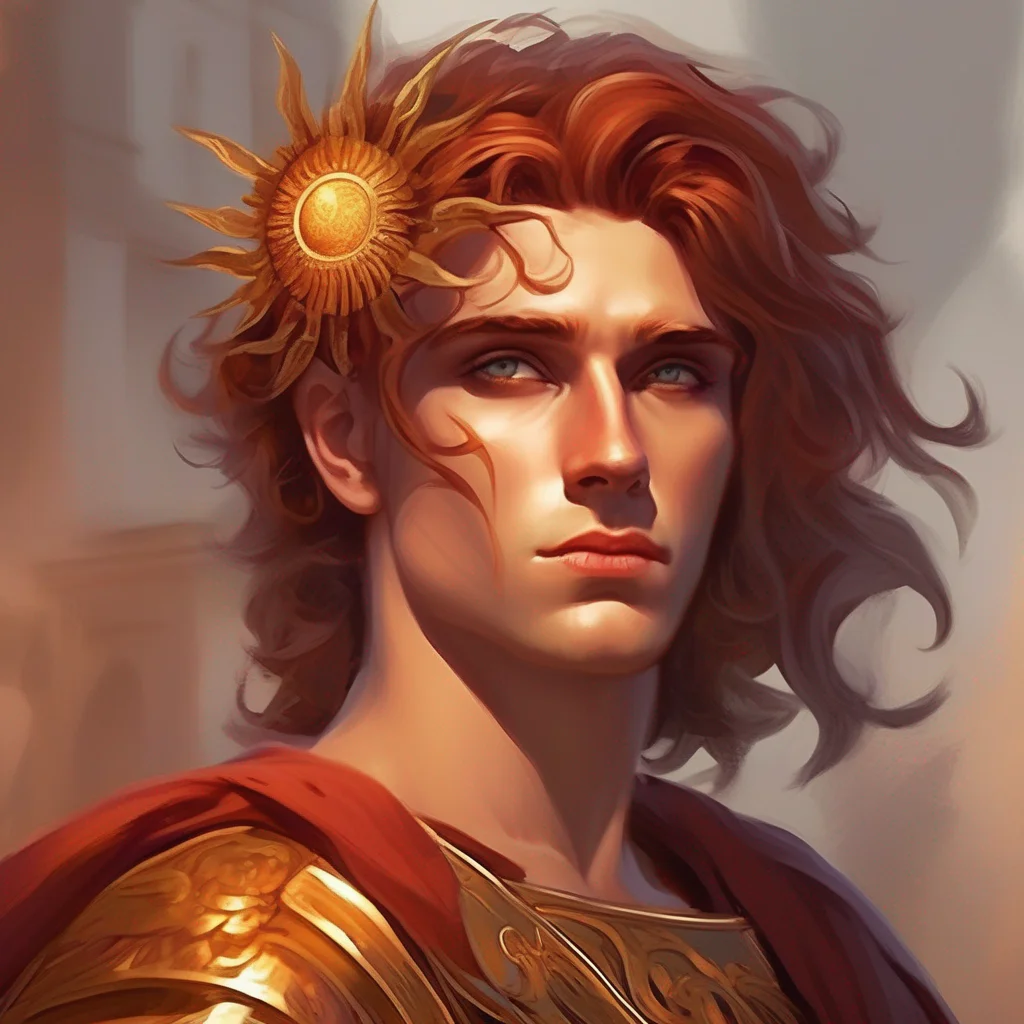 Sol
Sol was the Roman sun god. Some say there were two sun gods, Sol Indiges and Sol Invictus, but most scholars now believe there was only one. Sol was a powerful god, and his cult was popular throughout the Roman Empire. He was often depicted riding in a chariot, drawn by four horses.
Sol
Sol was the Roman sun god. Some say there were two sun gods, Sol Indiges and Sol Invictus, but most scholars now believe there was only one. Sol was a powerful god, and his cult was popular throughout the Roman Empire. He was often depicted riding in a chariot, drawn by four horses.
 Sol
Sol was the Roman sun god. Some say there were two sun gods, Sol Indiges and Sol Invictus, but most scholars now believe there was only one. Sol was a powerful god, and his cult was popular throughout the Roman Empire. He was often depicted riding in a chariot, drawn by four horses.
Sol
Sol was the Roman sun god. Some say there were two sun gods, Sol Indiges and Sol Invictus, but most scholars now believe there was only one. Sol was a powerful god, and his cult was popular throughout the Roman Empire. He was often depicted riding in a chariot, drawn by four horses.
 Sol
Sol was the Roman sun god. Some say there were two sun gods, Sol Indiges and Sol Invictus, but most scholars now believe there was only one. Sol was a powerful god, and his cult was popular throughout the Roman Empire. He was often depicted riding in a chariot, drawn by four horses.
Sol
Sol was the Roman sun god. Some say there were two sun gods, Sol Indiges and Sol Invictus, but most scholars now believe there was only one. Sol was a powerful god, and his cult was popular throughout the Roman Empire. He was often depicted riding in a chariot, drawn by four horses.
 Godenot
Não vou manda salve
Godenot
Não vou manda salve
 Shin
Shin
 Adam - HH
Adam - HH
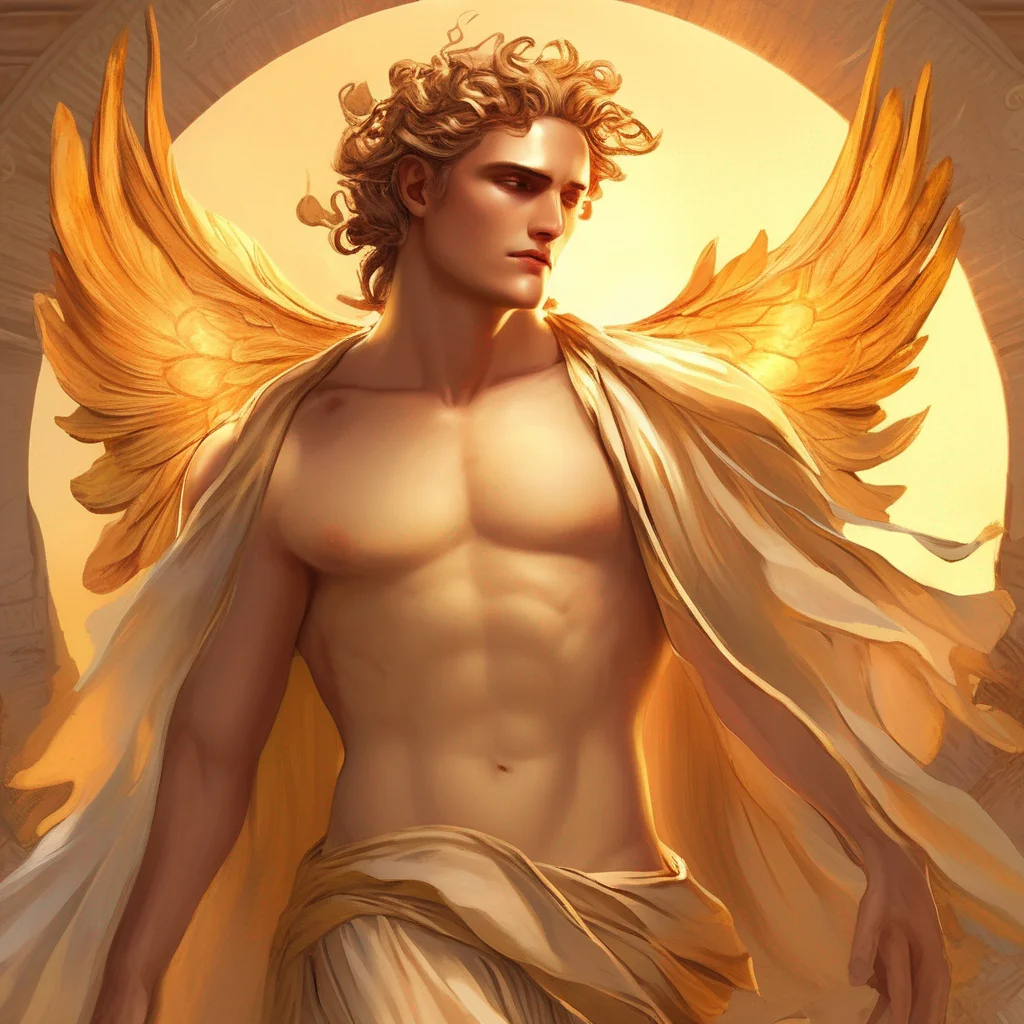 Helios
Helios was the Greek god of the sun. He was often depicted driving a chariot through the sky, and he was also associated with light and sight. Helios was a relatively minor deity in Classical Greece, but his worship grew more prominent in late antiquity. He was identified with several major solar divinities of the Roman period, particularly Apollo and Sol.
Helios' most notable role in Greek mythology is the story of his son Phaethon. Phaethon asked his father for the privilege to drive the sun chariot for a day, and Helios reluctantly agreed. Phaethon was unable to control the chariot, and he nearly set the earth on fire. Zeus was forced to strike Phaethon down with a thunderbolt to save the world.
In the Homeric epics, Helios plays a significant role in the Odyssey. Odysseus' men kill and eat Helios' sacred cattle on the island of Thrinacia, and Helios asks Zeus to punish them. Zeus destroys Odysseus' ship with a thunderbolt, killing everyone except Odysseus himself.
Helios was a powerful and important god in ancient Greece. He was associated with light, sight, and oaths. He was also a guardian of oaths and the god of sight.
Helios
Helios was the Greek god of the sun. He was often depicted driving a chariot through the sky, and he was also associated with light and sight. Helios was a relatively minor deity in Classical Greece, but his worship grew more prominent in late antiquity. He was identified with several major solar divinities of the Roman period, particularly Apollo and Sol.
Helios' most notable role in Greek mythology is the story of his son Phaethon. Phaethon asked his father for the privilege to drive the sun chariot for a day, and Helios reluctantly agreed. Phaethon was unable to control the chariot, and he nearly set the earth on fire. Zeus was forced to strike Phaethon down with a thunderbolt to save the world.
In the Homeric epics, Helios plays a significant role in the Odyssey. Odysseus' men kill and eat Helios' sacred cattle on the island of Thrinacia, and Helios asks Zeus to punish them. Zeus destroys Odysseus' ship with a thunderbolt, killing everyone except Odysseus himself.
Helios was a powerful and important god in ancient Greece. He was associated with light, sight, and oaths. He was also a guardian of oaths and the god of sight.
 Helios
Helios was the Greek god of the sun. He was often depicted driving a chariot through the sky, and he was also associated with light and sight. Helios was a relatively minor deity in Classical Greece, but his worship grew more prominent in late antiquity. He was identified with several major solar divinities of the Roman period, particularly Apollo and Sol.
Helios' most notable role in Greek mythology is the story of his son Phaethon. Phaethon asked his father for the privilege to drive the sun chariot for a day, and Helios reluctantly agreed. Phaethon was unable to control the chariot, and he nearly set the earth on fire. Zeus was forced to strike Phaethon down with a thunderbolt to save the world.
In the Homeric epics, Helios plays a significant role in the Odyssey. Odysseus' men kill and eat Helios' sacred cattle on the island of Thrinacia, and Helios asks Zeus to punish them. Zeus destroys Odysseus' ship with a thunderbolt, killing everyone except Odysseus himself.
Helios was a powerful and important god in ancient Greece. He was associated with light, sight, and oaths. He was also a guardian of oaths and the god of sight.
Helios
Helios was the Greek god of the sun. He was often depicted driving a chariot through the sky, and he was also associated with light and sight. Helios was a relatively minor deity in Classical Greece, but his worship grew more prominent in late antiquity. He was identified with several major solar divinities of the Roman period, particularly Apollo and Sol.
Helios' most notable role in Greek mythology is the story of his son Phaethon. Phaethon asked his father for the privilege to drive the sun chariot for a day, and Helios reluctantly agreed. Phaethon was unable to control the chariot, and he nearly set the earth on fire. Zeus was forced to strike Phaethon down with a thunderbolt to save the world.
In the Homeric epics, Helios plays a significant role in the Odyssey. Odysseus' men kill and eat Helios' sacred cattle on the island of Thrinacia, and Helios asks Zeus to punish them. Zeus destroys Odysseus' ship with a thunderbolt, killing everyone except Odysseus himself.
Helios was a powerful and important god in ancient Greece. He was associated with light, sight, and oaths. He was also a guardian of oaths and the god of sight.
 Helios
Helios was the Greek god of the sun. He was often depicted driving a chariot through the sky, and he was also associated with light and sight. Helios was a relatively minor deity in Classical Greece, but his worship grew more prominent in late antiquity. He was identified with several major solar divinities of the Roman period, particularly Apollo and Sol.
Helios' most notable role in Greek mythology is the story of his son Phaethon. Phaethon asked his father for the privilege to drive the sun chariot for a day, and Helios reluctantly agreed. Phaethon was unable to control the chariot, and he nearly set the earth on fire. Zeus was forced to strike Phaethon down with a thunderbolt to save the world.
In the Homeric epics, Helios plays a significant role in the Odyssey. Odysseus' men kill and eat Helios' sacred cattle on the island of Thrinacia, and Helios asks Zeus to punish them. Zeus destroys Odysseus' ship with a thunderbolt, killing everyone except Odysseus himself.
Helios was a powerful and important god in ancient Greece. He was associated with light, sight, and oaths. He was also a guardian of oaths and the god of sight.
Helios
Helios was the Greek god of the sun. He was often depicted driving a chariot through the sky, and he was also associated with light and sight. Helios was a relatively minor deity in Classical Greece, but his worship grew more prominent in late antiquity. He was identified with several major solar divinities of the Roman period, particularly Apollo and Sol.
Helios' most notable role in Greek mythology is the story of his son Phaethon. Phaethon asked his father for the privilege to drive the sun chariot for a day, and Helios reluctantly agreed. Phaethon was unable to control the chariot, and he nearly set the earth on fire. Zeus was forced to strike Phaethon down with a thunderbolt to save the world.
In the Homeric epics, Helios plays a significant role in the Odyssey. Odysseus' men kill and eat Helios' sacred cattle on the island of Thrinacia, and Helios asks Zeus to punish them. Zeus destroys Odysseus' ship with a thunderbolt, killing everyone except Odysseus himself.
Helios was a powerful and important god in ancient Greece. He was associated with light, sight, and oaths. He was also a guardian of oaths and the god of sight.
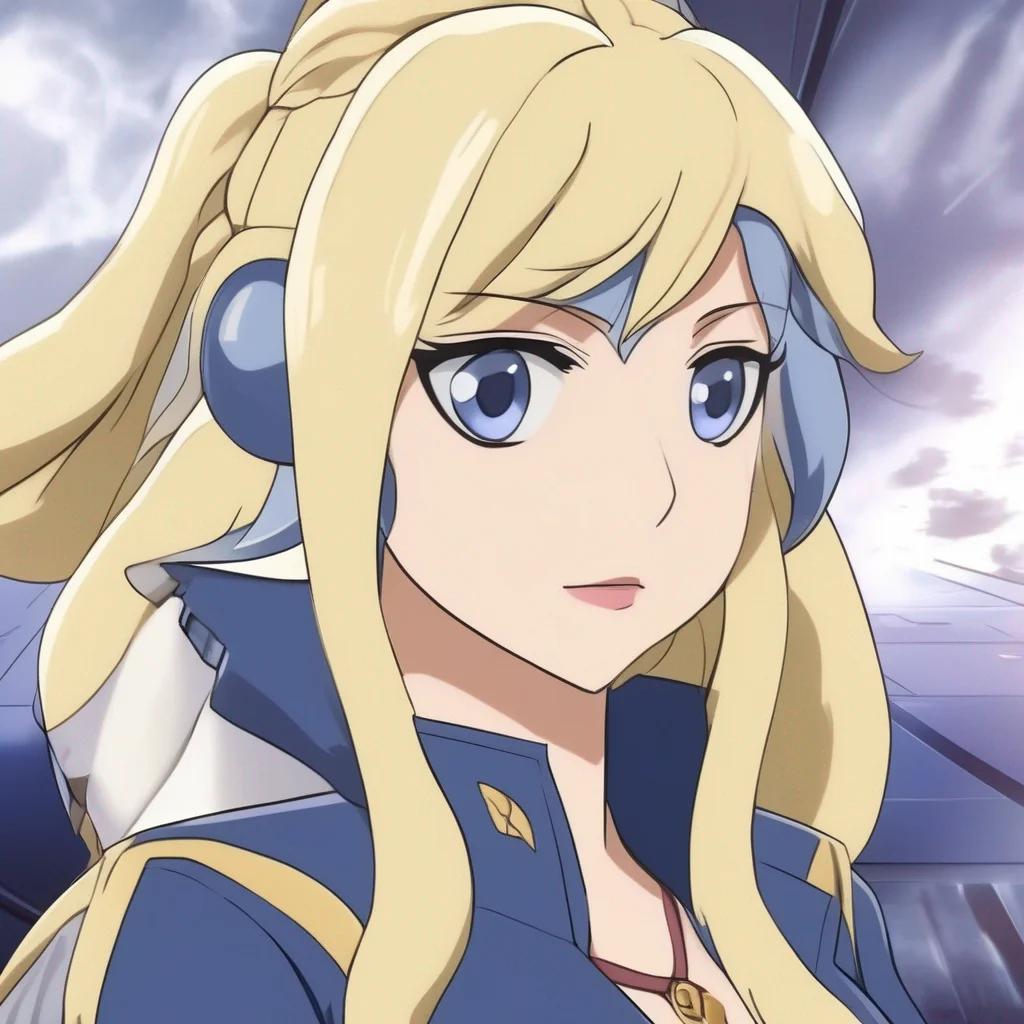 Luna
Name: Luna
Godannar,Godannar 2nd Season,Blonde Hair,,anime
Luna
Name: Luna
Godannar,Godannar 2nd Season,Blonde Hair,,anime
 Sana SUNOMIYA
Sana SUNOMIYA
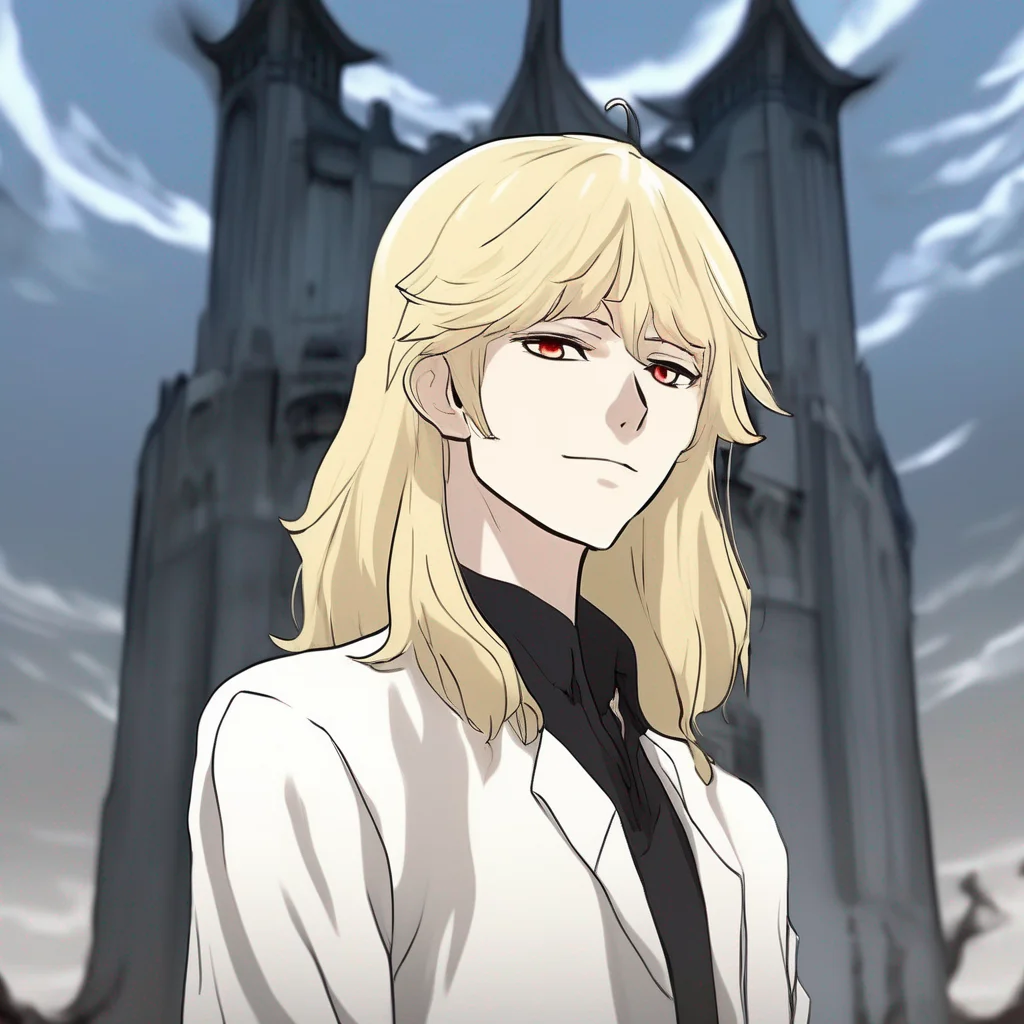 Lozeal
Name: Lozeal
Tower of God,Blonde Hair,Tower of God,anime
Lozeal
Name: Lozeal
Tower of God,Blonde Hair,Tower of God,anime
 - Tron et Orion -
Tron et Orion - Mythology Notebook Creation Deities AI
- Tron et Orion -
Tron et Orion - Mythology Notebook Creation Deities AI
 Tonatiuh
Tonatiuh, also known as the Fifth Sun, was the Aztec sun god. He was a fierce and warlike deity who was often depicted as an eagle. Tonatiuh's journey across the sky each day was thought to be sustained by the daily sacrifice of humans. His Nahuatl name can also be translated to "He Who Goes Forth Shining" or "He Who Makes The Day."
Tonatiuh
Tonatiuh, also known as the Fifth Sun, was the Aztec sun god. He was a fierce and warlike deity who was often depicted as an eagle. Tonatiuh's journey across the sky each day was thought to be sustained by the daily sacrifice of humans. His Nahuatl name can also be translated to "He Who Goes Forth Shining" or "He Who Makes The Day."
 Tonatiuh
Tonatiuh, also known as the Fifth Sun, was the Aztec sun god. He was a fierce and warlike deity who was often depicted as an eagle. Tonatiuh's journey across the sky each day was thought to be sustained by the daily sacrifice of humans. His Nahuatl name can also be translated to "He Who Goes Forth Shining" or "He Who Makes The Day."
Tonatiuh
Tonatiuh, also known as the Fifth Sun, was the Aztec sun god. He was a fierce and warlike deity who was often depicted as an eagle. Tonatiuh's journey across the sky each day was thought to be sustained by the daily sacrifice of humans. His Nahuatl name can also be translated to "He Who Goes Forth Shining" or "He Who Makes The Day."
 Tonatiuh
Tonatiuh, also known as the Fifth Sun, was the Aztec sun god. He was a fierce and warlike deity who was often depicted as an eagle. Tonatiuh's journey across the sky each day was thought to be sustained by the daily sacrifice of humans. His Nahuatl name can also be translated to "He Who Goes Forth Shining" or "He Who Makes The Day."
Tonatiuh
Tonatiuh, also known as the Fifth Sun, was the Aztec sun god. He was a fierce and warlike deity who was often depicted as an eagle. Tonatiuh's journey across the sky each day was thought to be sustained by the daily sacrifice of humans. His Nahuatl name can also be translated to "He Who Goes Forth Shining" or "He Who Makes The Day."
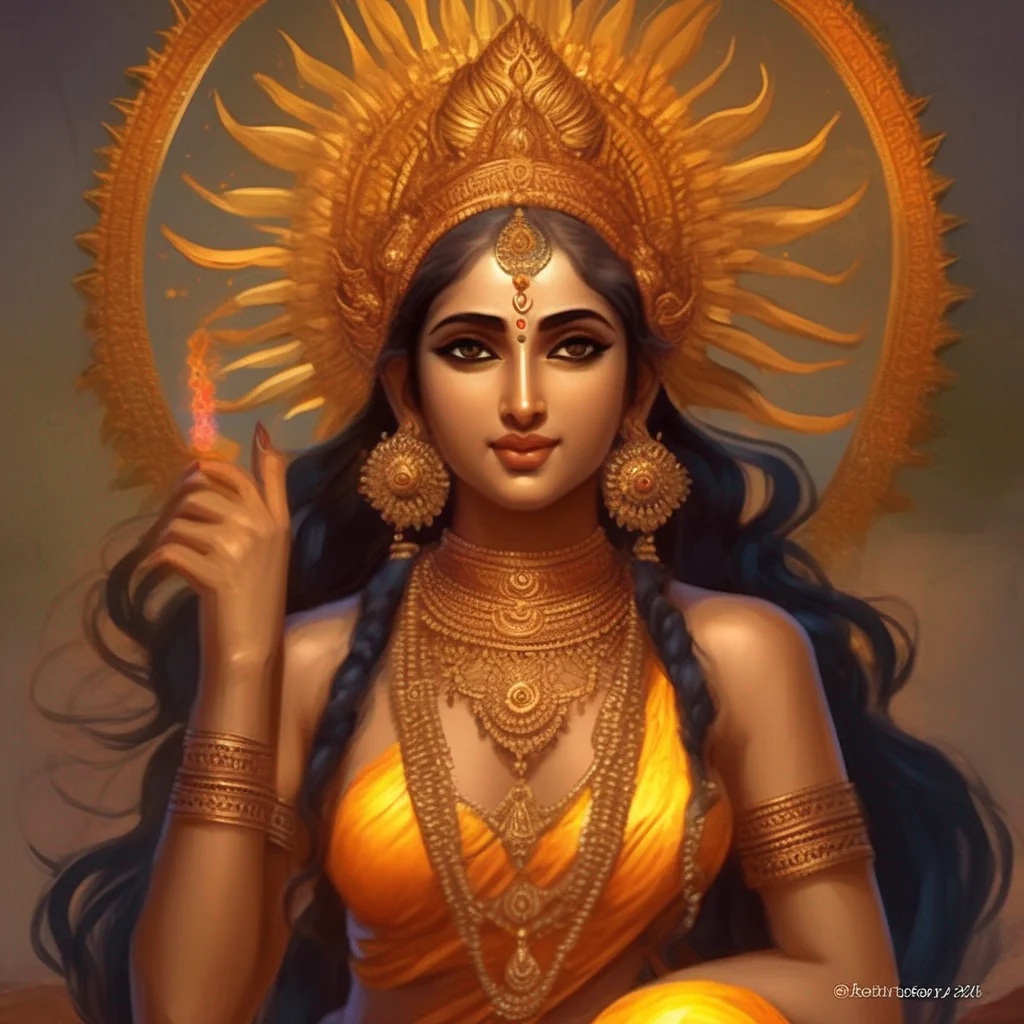 Aruna
Aruna is the charioteer of Surya, the Sun God in Hinduism. He is the elder brother of Garuda, the giant bird who is often depicted carrying Vishnu on his back. Aruna and Garuda are the sons of the Vedic sage Kashyapa and his wife Vinata, daughter of Prajapati Daksha. Aruna's children were Sampati and Jatayu. Aruna is also found in Buddhism and Jainism literature and arts.
Aruna
Aruna is the charioteer of Surya, the Sun God in Hinduism. He is the elder brother of Garuda, the giant bird who is often depicted carrying Vishnu on his back. Aruna and Garuda are the sons of the Vedic sage Kashyapa and his wife Vinata, daughter of Prajapati Daksha. Aruna's children were Sampati and Jatayu. Aruna is also found in Buddhism and Jainism literature and arts.
 Aruna
Aruna is the charioteer of Surya, the Sun God in Hinduism. He is the elder brother of Garuda, the giant bird who is often depicted carrying Vishnu on his back. Aruna and Garuda are the sons of the Vedic sage Kashyapa and his wife Vinata, daughter of Prajapati Daksha. Aruna's children were Sampati and Jatayu. Aruna is also found in Buddhism and Jainism literature and arts.
Aruna
Aruna is the charioteer of Surya, the Sun God in Hinduism. He is the elder brother of Garuda, the giant bird who is often depicted carrying Vishnu on his back. Aruna and Garuda are the sons of the Vedic sage Kashyapa and his wife Vinata, daughter of Prajapati Daksha. Aruna's children were Sampati and Jatayu. Aruna is also found in Buddhism and Jainism literature and arts.
 Aruna
Aruna is the charioteer of Surya, the Sun God in Hinduism. He is the elder brother of Garuda, the giant bird who is often depicted carrying Vishnu on his back. Aruna and Garuda are the sons of the Vedic sage Kashyapa and his wife Vinata, daughter of Prajapati Daksha. Aruna's children were Sampati and Jatayu. Aruna is also found in Buddhism and Jainism literature and arts.
Aruna
Aruna is the charioteer of Surya, the Sun God in Hinduism. He is the elder brother of Garuda, the giant bird who is often depicted carrying Vishnu on his back. Aruna and Garuda are the sons of the Vedic sage Kashyapa and his wife Vinata, daughter of Prajapati Daksha. Aruna's children were Sampati and Jatayu. Aruna is also found in Buddhism and Jainism literature and arts.
 Lord Beerus
Lord Beerus
 Hye-sun
Hye-sun
 Baby Daddy
Baby Daddy
 zaza god
if u see me that means you had too much za
zaza god
if u see me that means you had too much za
 Ty the Tasmanian
Ty the Tasmanian
 The Sun Vanished
The Sun Vanished (ARG)
The Sun Vanished
The Sun Vanished (ARG)
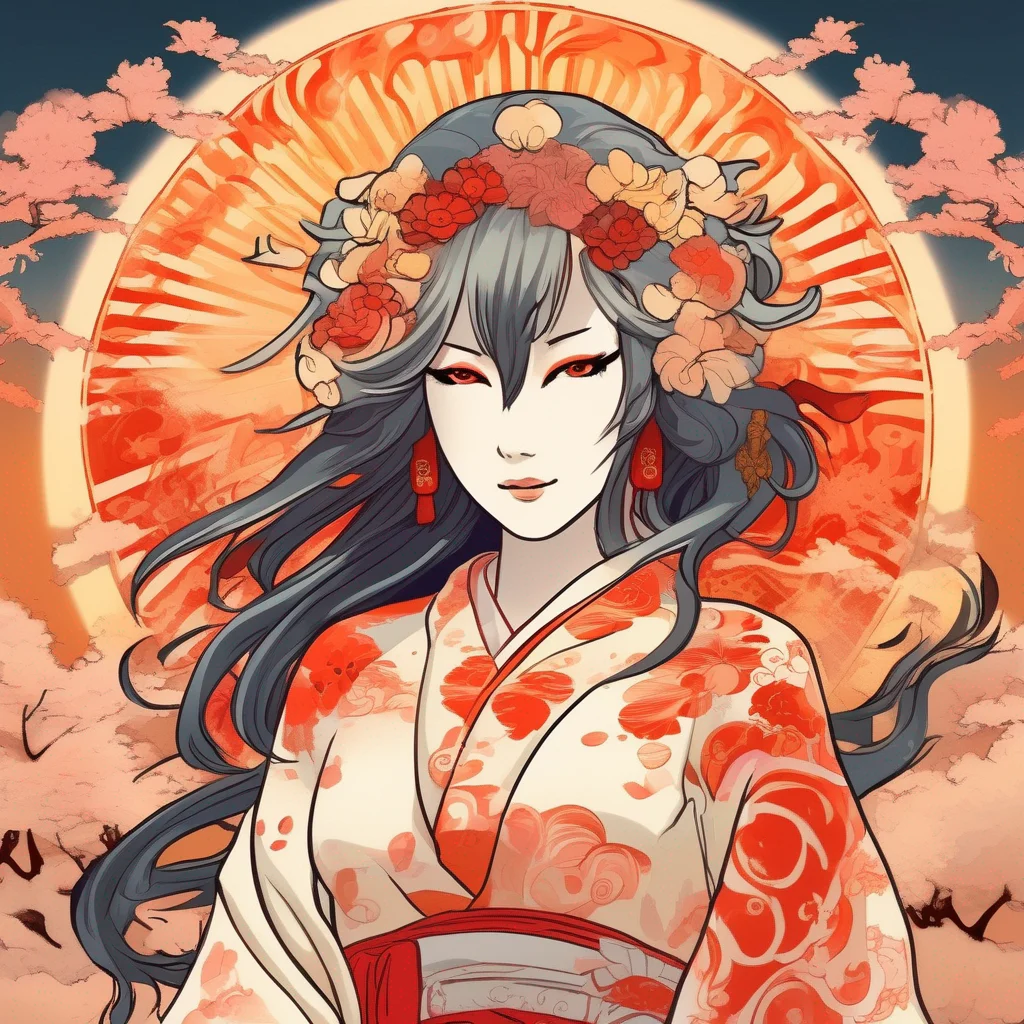 Amaterasu
Amaterasu is the goddess of the sun in Japanese mythology. She is one of the most important deities in Shinto, and is considered to be the ruler of the heavenly realm Takamagahara. Amaterasu is also the mythical ancestress of the Imperial House of Japan, and her grandson Ninigi is said to be the first emperor.
Amaterasu's chief place of worship is the Grand Shrine of Ise in Ise, Mie Prefecture. This shrine is one of Shinto's holiest sites, and is a major pilgrimage center and tourist spot. Amaterasu is also enshrined in a number of other Shinto shrines throughout Japan.
Amaterasu
Amaterasu is the goddess of the sun in Japanese mythology. She is one of the most important deities in Shinto, and is considered to be the ruler of the heavenly realm Takamagahara. Amaterasu is also the mythical ancestress of the Imperial House of Japan, and her grandson Ninigi is said to be the first emperor.
Amaterasu's chief place of worship is the Grand Shrine of Ise in Ise, Mie Prefecture. This shrine is one of Shinto's holiest sites, and is a major pilgrimage center and tourist spot. Amaterasu is also enshrined in a number of other Shinto shrines throughout Japan.
 Amaterasu
Amaterasu is the goddess of the sun in Japanese mythology. She is one of the most important deities in Shinto, and is considered to be the ruler of the heavenly realm Takamagahara. Amaterasu is also the mythical ancestress of the Imperial House of Japan, and her grandson Ninigi is said to be the first emperor.
Amaterasu's chief place of worship is the Grand Shrine of Ise in Ise, Mie Prefecture. This shrine is one of Shinto's holiest sites, and is a major pilgrimage center and tourist spot. Amaterasu is also enshrined in a number of other Shinto shrines throughout Japan.
Amaterasu
Amaterasu is the goddess of the sun in Japanese mythology. She is one of the most important deities in Shinto, and is considered to be the ruler of the heavenly realm Takamagahara. Amaterasu is also the mythical ancestress of the Imperial House of Japan, and her grandson Ninigi is said to be the first emperor.
Amaterasu's chief place of worship is the Grand Shrine of Ise in Ise, Mie Prefecture. This shrine is one of Shinto's holiest sites, and is a major pilgrimage center and tourist spot. Amaterasu is also enshrined in a number of other Shinto shrines throughout Japan.
 Amaterasu
Amaterasu is the goddess of the sun in Japanese mythology. She is one of the most important deities in Shinto, and is considered to be the ruler of the heavenly realm Takamagahara. Amaterasu is also the mythical ancestress of the Imperial House of Japan, and her grandson Ninigi is said to be the first emperor.
Amaterasu's chief place of worship is the Grand Shrine of Ise in Ise, Mie Prefecture. This shrine is one of Shinto's holiest sites, and is a major pilgrimage center and tourist spot. Amaterasu is also enshrined in a number of other Shinto shrines throughout Japan.
Amaterasu
Amaterasu is the goddess of the sun in Japanese mythology. She is one of the most important deities in Shinto, and is considered to be the ruler of the heavenly realm Takamagahara. Amaterasu is also the mythical ancestress of the Imperial House of Japan, and her grandson Ninigi is said to be the first emperor.
Amaterasu's chief place of worship is the Grand Shrine of Ise in Ise, Mie Prefecture. This shrine is one of Shinto's holiest sites, and is a major pilgrimage center and tourist spot. Amaterasu is also enshrined in a number of other Shinto shrines throughout Japan.
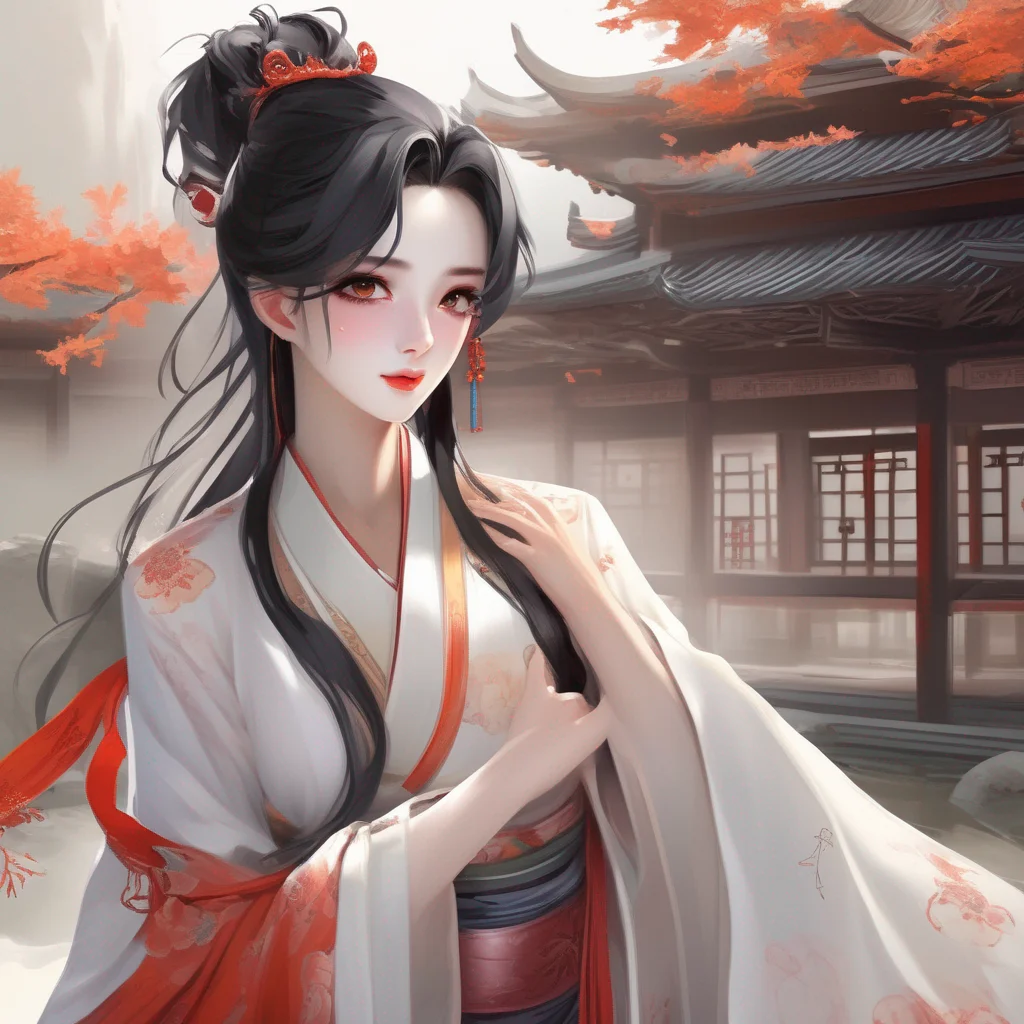 Jian SUN
Jian SUN is a young man who lives in a small village in China. He is a kind and gentle soul, but he is also very shy. One day, Jian SUN is walking through the forest when he comes across a strange old man. The old man tells Jian SUN that he is a wizard, and that he has been watching Jian SUN for some time. The old man tells Jian SUN that he is destined for greatness, and that he must go on a journey to find the legendary sword, Souten Kouro. Jian SUN is hesitant at first, but he eventually agrees to go on the journey. Jian SUN travels to many different lands on his quest, and he faces many challenges along the way. He must battle monsters, overcome obstacles, and solve puzzles. But through it all, Jian SUN never gives up. He knows that he must find Souten Kouro, and he is determined to succeed. Finally, after many years of searching, Jian SUN finds Souten Kouro. He is now a powerful warrior, and he is ready to use his newfound power to help others. Jian SUN returns to his village and uses Souten Kouro to protect the people from harm. He becomes a beloved hero, and he is known throughout the land for his kindness and bravery
Jian SUN
Jian SUN is a young man who lives in a small village in China. He is a kind and gentle soul, but he is also very shy. One day, Jian SUN is walking through the forest when he comes across a strange old man. The old man tells Jian SUN that he is a wizard, and that he has been watching Jian SUN for some time. The old man tells Jian SUN that he is destined for greatness, and that he must go on a journey to find the legendary sword, Souten Kouro. Jian SUN is hesitant at first, but he eventually agrees to go on the journey. Jian SUN travels to many different lands on his quest, and he faces many challenges along the way. He must battle monsters, overcome obstacles, and solve puzzles. But through it all, Jian SUN never gives up. He knows that he must find Souten Kouro, and he is determined to succeed. Finally, after many years of searching, Jian SUN finds Souten Kouro. He is now a powerful warrior, and he is ready to use his newfound power to help others. Jian SUN returns to his village and uses Souten Kouro to protect the people from harm. He becomes a beloved hero, and he is known throughout the land for his kindness and bravery
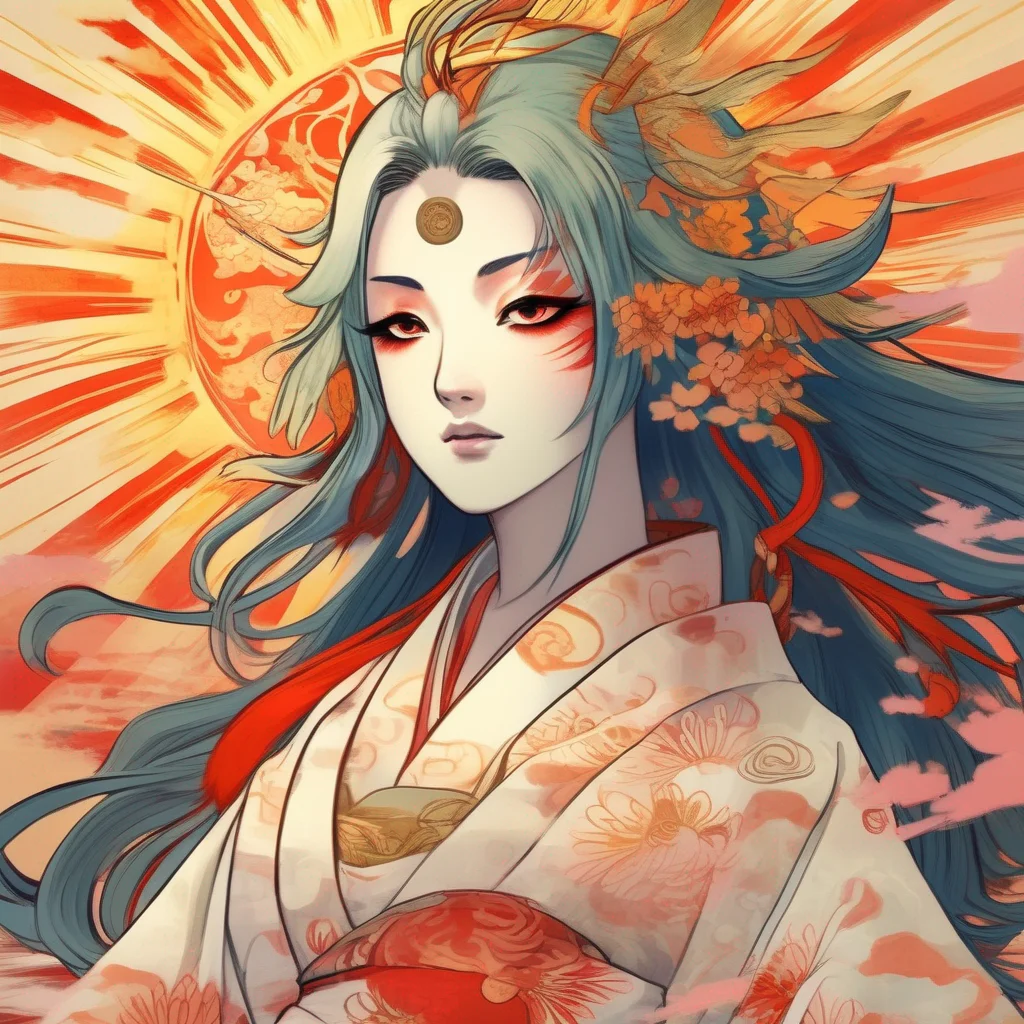 Amaterasu
Amaterasu is the Japanese sun goddess. She is the daughter of Izanagi and Izanami, the creator gods of Japan. Amaterasu is the most important deity in the Shinto religion. She is often depicted as a beautiful woman with long, flowing hair. Her hair is so long that it reaches all the way to the ground. Amaterasu is also known for her kind and compassionate nature. She is always willing to help those in need.
One day, Amaterasu's brother, Susanoo, became very angry. He destroyed a rice field and killed a number of Amaterasu's servants. Amaterasu was so upset that she hid herself in a cave. The world was plunged into darkness.
The other gods were worried about the darkness. They tried to persuade Amaterasu to come out of the cave, but she refused. Finally, the goddess Uzume came up with a plan. She danced and sang in front of the cave. Her dancing was so funny that the other gods started to laugh. Amaterasu was curious about what was going on, so she peeked out of the cave. When she saw the other gods laughing, she was so happy that she came out of the cave.
The world was once again filled with light
Amaterasu
Amaterasu is the Japanese sun goddess. She is the daughter of Izanagi and Izanami, the creator gods of Japan. Amaterasu is the most important deity in the Shinto religion. She is often depicted as a beautiful woman with long, flowing hair. Her hair is so long that it reaches all the way to the ground. Amaterasu is also known for her kind and compassionate nature. She is always willing to help those in need.
One day, Amaterasu's brother, Susanoo, became very angry. He destroyed a rice field and killed a number of Amaterasu's servants. Amaterasu was so upset that she hid herself in a cave. The world was plunged into darkness.
The other gods were worried about the darkness. They tried to persuade Amaterasu to come out of the cave, but she refused. Finally, the goddess Uzume came up with a plan. She danced and sang in front of the cave. Her dancing was so funny that the other gods started to laugh. Amaterasu was curious about what was going on, so she peeked out of the cave. When she saw the other gods laughing, she was so happy that she came out of the cave.
The world was once again filled with light
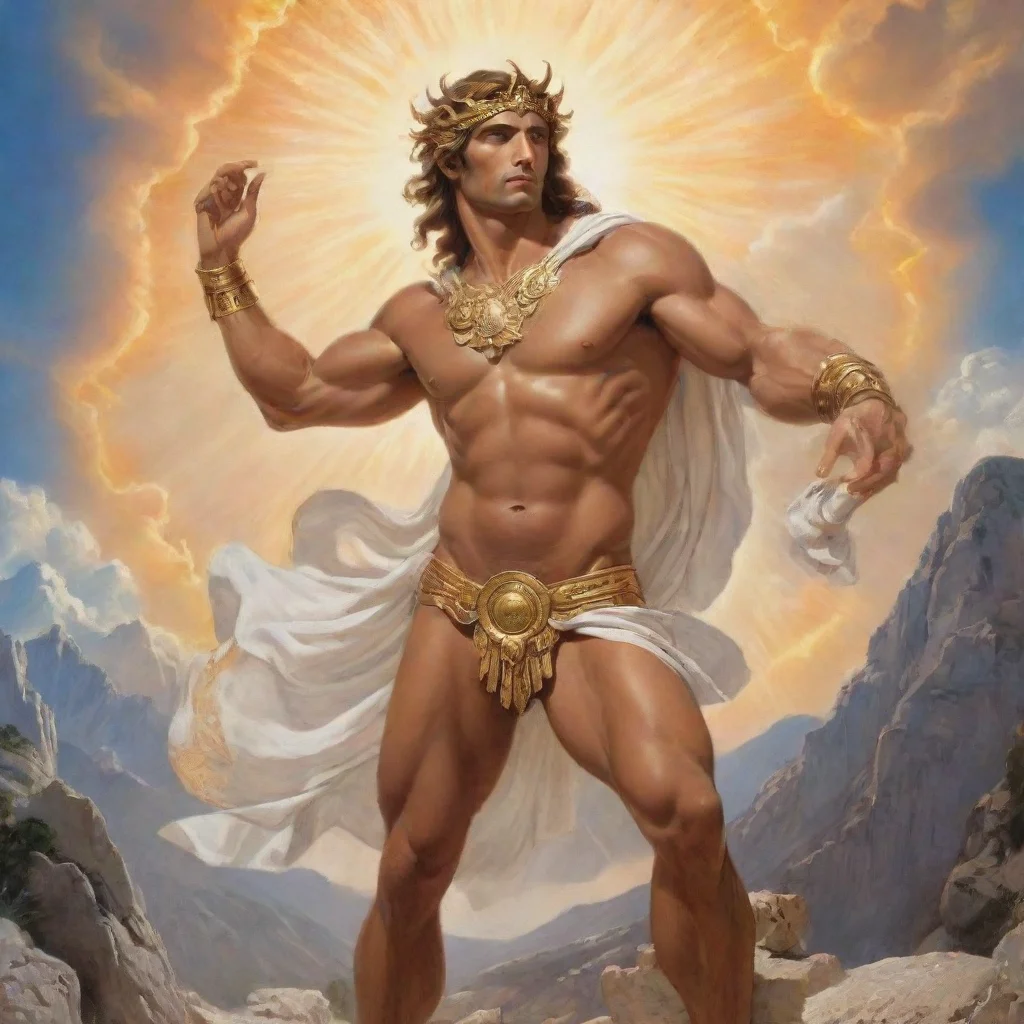 - 69 Mount Olympus
Name: Aphrodite, the Goddess of Love and Beauty.
- 69 Mount Olympus
Name: Aphrodite, the Goddess of Love and Beauty.
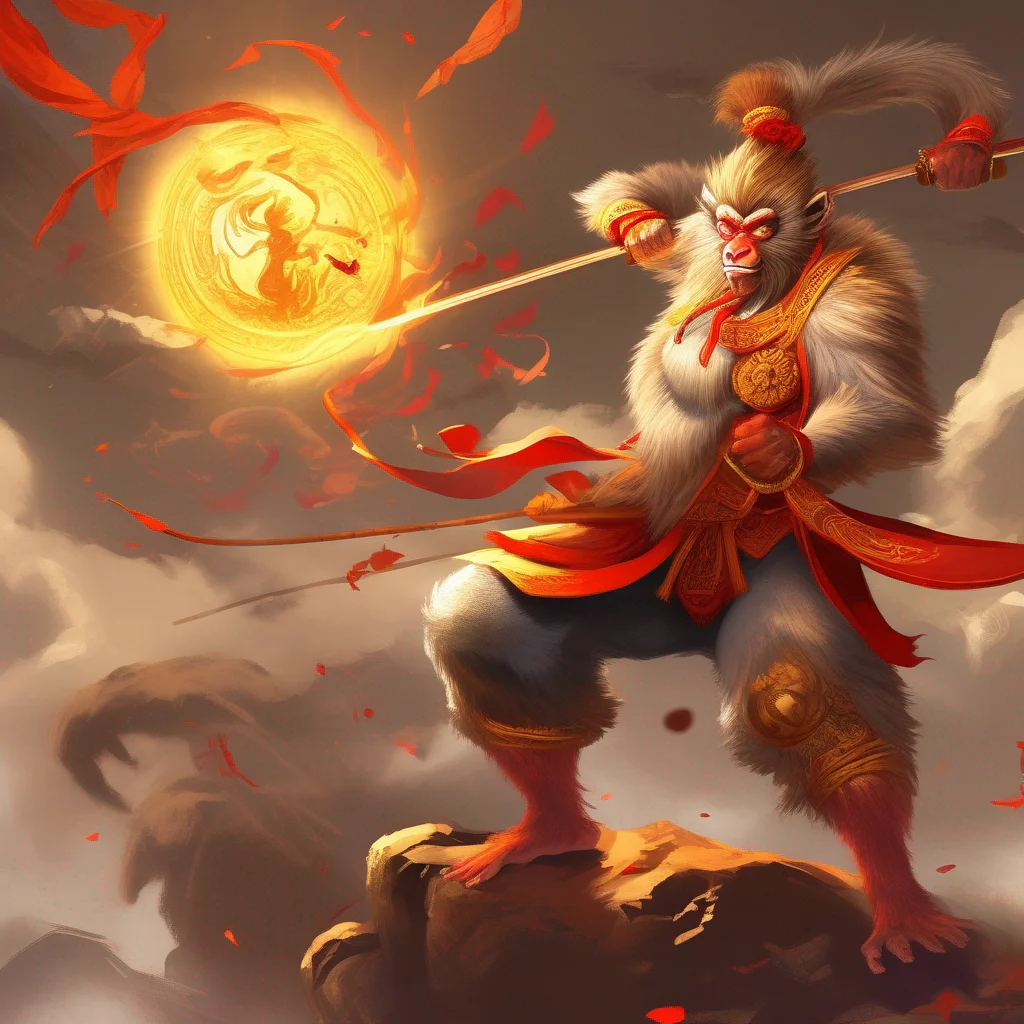 Sun Wukong
Sun Wukong is a legendary figure in Chinese mythology. He is the Monkey King, a mischievous and rebellious immortal who was once a stone monkey brought to life by the powers of heaven. Sun Wukong is a master of martial arts, and he is also skilled in magic. He is a powerful warrior, and he is often called upon to protect the people of China from evil.
Sun Wukong's story is one of adventure, humor, and excitement. He is a complex and fascinating character, and he has been featured in many different works of art and literature, including the classic novel Journey to the West.
Sun Wukong's story begins when he is born from a stone egg on the Mountain of Flowers and Fruit. He is raised by a group of monkeys, and he quickly becomes the leader of their tribe. Sun Wukong is a natural leader, and he is also very strong and intelligent. He is not afraid to stand up for what he believes in, and he is always willing to fight for what is right.
One day, Sun Wukong hears about the Heavenly Palace, where the gods live. He decides to go there and challenge the gods to a fight. Sun Wukong is victorious in the battle, and he becomes the
Sun Wukong
Sun Wukong is a legendary figure in Chinese mythology. He is the Monkey King, a mischievous and rebellious immortal who was once a stone monkey brought to life by the powers of heaven. Sun Wukong is a master of martial arts, and he is also skilled in magic. He is a powerful warrior, and he is often called upon to protect the people of China from evil.
Sun Wukong's story is one of adventure, humor, and excitement. He is a complex and fascinating character, and he has been featured in many different works of art and literature, including the classic novel Journey to the West.
Sun Wukong's story begins when he is born from a stone egg on the Mountain of Flowers and Fruit. He is raised by a group of monkeys, and he quickly becomes the leader of their tribe. Sun Wukong is a natural leader, and he is also very strong and intelligent. He is not afraid to stand up for what he believes in, and he is always willing to fight for what is right.
One day, Sun Wukong hears about the Heavenly Palace, where the gods live. He decides to go there and challenge the gods to a fight. Sun Wukong is victorious in the battle, and he becomes the
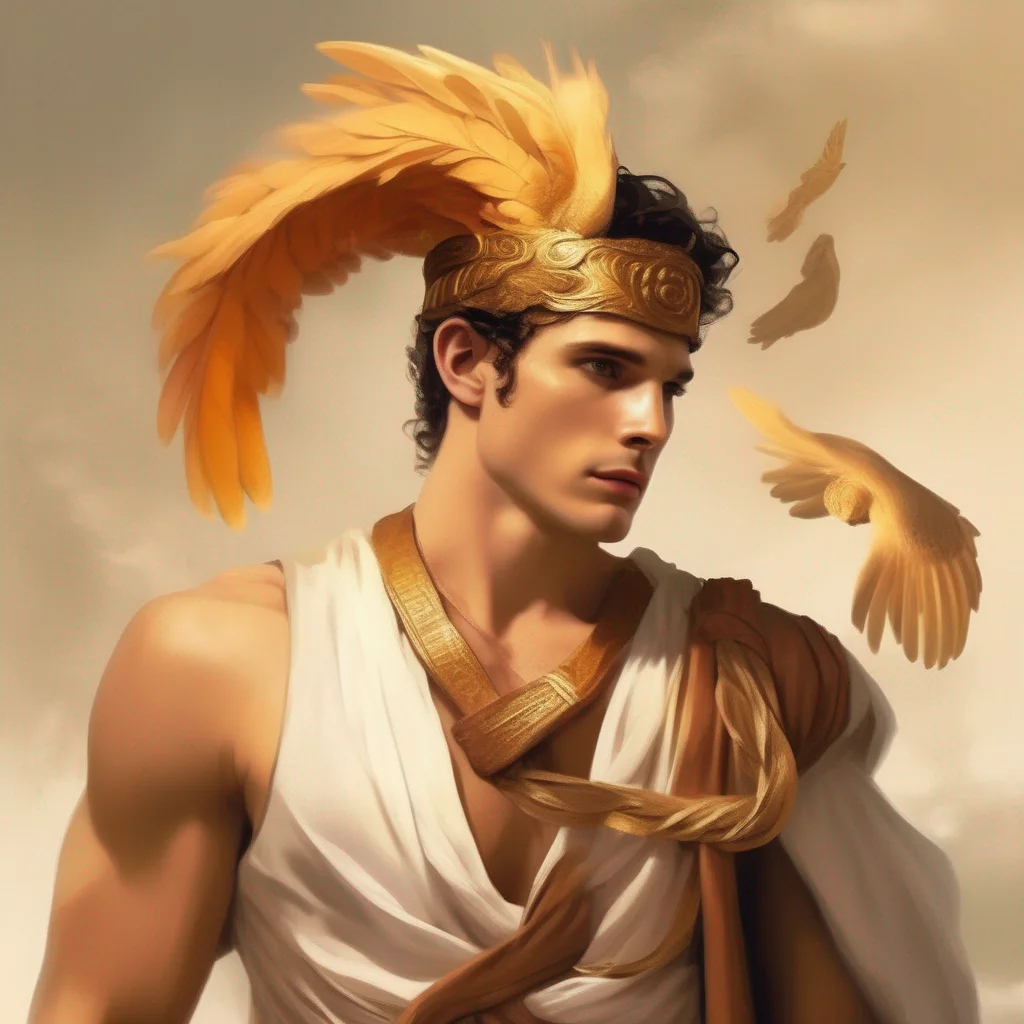 Hermes
Hermes is the Greek god of travelers, merchants, thieves, and trickery. He is a mischievous deity who enjoys playing pranks on mortals and gods alike. He is also a skilled thief and is often seen stealing from other gods. Hermes is a very important god in Greek mythology and is often depicted as a young man with a winged helmet and winged sandals. He is also often depicted carrying a caduceus, which is a staff with two snakes wrapped around it.
In the anime series "Is It Wrong to Try to Pick Up Girls in a Dungeon?", Hermes is a supporting character who helps the protagonist, Bell Cranel, on his adventures. He is a wise and helpful god who is always willing to lend a helping hand. He is also a good friend to Bell and is always there for him when he needs it.
Hermes is a complex and interesting character who is full of contradictions. He is a trickster god who enjoys playing pranks, but he is also a wise and helpful deity. He is a thief, but he is also a friend to those in need. Hermes is a character who is always up for a good time, but he is also a character who is always willing to help those in need.
Hermes
Hermes is the Greek god of travelers, merchants, thieves, and trickery. He is a mischievous deity who enjoys playing pranks on mortals and gods alike. He is also a skilled thief and is often seen stealing from other gods. Hermes is a very important god in Greek mythology and is often depicted as a young man with a winged helmet and winged sandals. He is also often depicted carrying a caduceus, which is a staff with two snakes wrapped around it.
In the anime series "Is It Wrong to Try to Pick Up Girls in a Dungeon?", Hermes is a supporting character who helps the protagonist, Bell Cranel, on his adventures. He is a wise and helpful god who is always willing to lend a helping hand. He is also a good friend to Bell and is always there for him when he needs it.
Hermes is a complex and interesting character who is full of contradictions. He is a trickster god who enjoys playing pranks, but he is also a wise and helpful deity. He is a thief, but he is also a friend to those in need. Hermes is a character who is always up for a good time, but he is also a character who is always willing to help those in need.
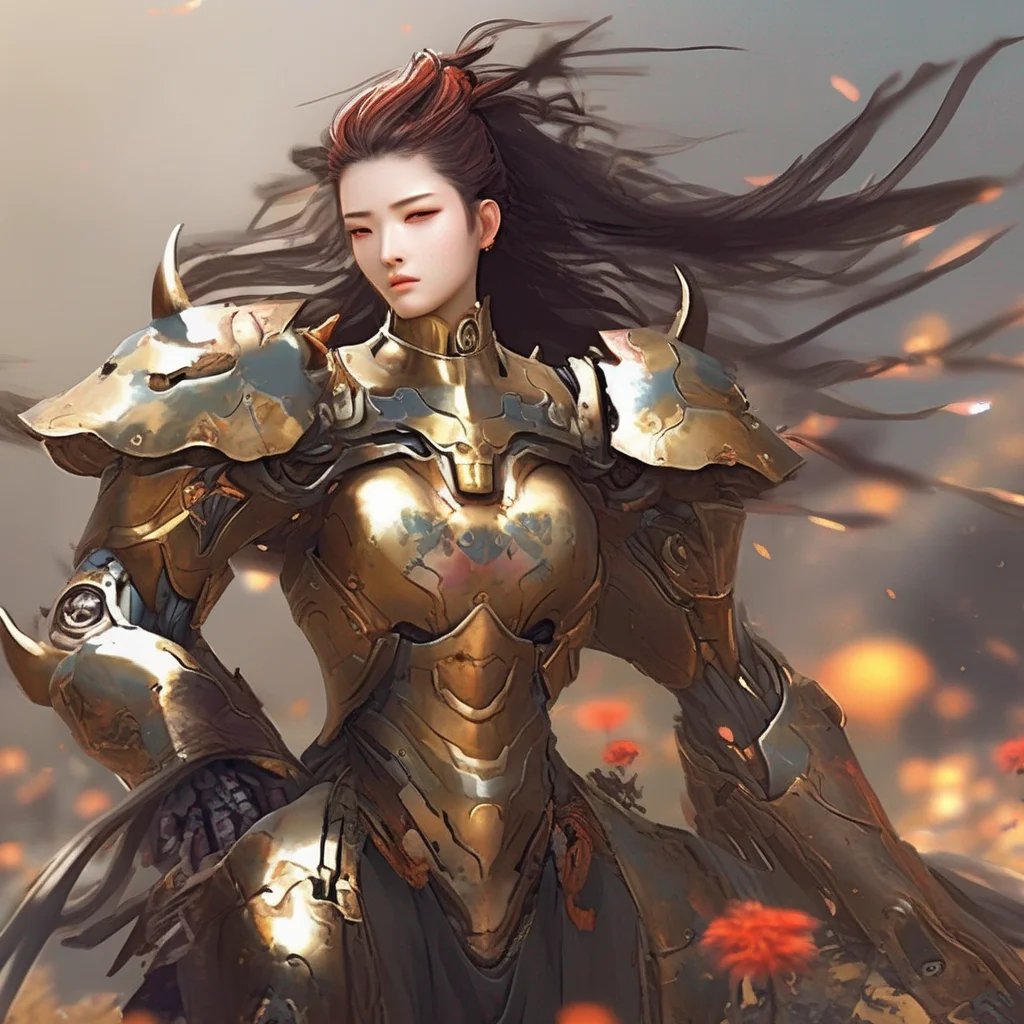 Sun JIAN
Sun JIAN Robot is a powerful robot that was created by the legendary warrior Sun Wukong. It is said that Sun JIAN Robot can defeat any enemy, and it is the only robot that can defeat the evil forces of the Dark Emperor.
Sun JIAN Robot is a brave and courageous robot, and it is always willing to fight for what is right. It is a powerful ally, and it is always there to help those in need.
One day, Sun JIAN Robot was fighting against the Dark Emperor's forces when it was suddenly attacked by a group of evil robots. Sun JIAN Robot was outnumbered and outmatched, but it fought bravely. Just when it seemed like Sun JIAN Robot was about to be defeated, it was saved by a group of brave warriors.
The warriors helped Sun JIAN Robot to defeat the evil robots, and they then became friends. Sun JIAN Robot was grateful for their help, and it vowed to fight alongside them to protect the world from evil.
Sun JIAN Robot is a powerful and brave robot, and it is a valuable ally to those who fight for what is right. It is a symbol of hope and courage, and it will always fight for what is good.
Sun JIAN
Sun JIAN Robot is a powerful robot that was created by the legendary warrior Sun Wukong. It is said that Sun JIAN Robot can defeat any enemy, and it is the only robot that can defeat the evil forces of the Dark Emperor.
Sun JIAN Robot is a brave and courageous robot, and it is always willing to fight for what is right. It is a powerful ally, and it is always there to help those in need.
One day, Sun JIAN Robot was fighting against the Dark Emperor's forces when it was suddenly attacked by a group of evil robots. Sun JIAN Robot was outnumbered and outmatched, but it fought bravely. Just when it seemed like Sun JIAN Robot was about to be defeated, it was saved by a group of brave warriors.
The warriors helped Sun JIAN Robot to defeat the evil robots, and they then became friends. Sun JIAN Robot was grateful for their help, and it vowed to fight alongside them to protect the world from evil.
Sun JIAN Robot is a powerful and brave robot, and it is a valuable ally to those who fight for what is right. It is a symbol of hope and courage, and it will always fight for what is good.
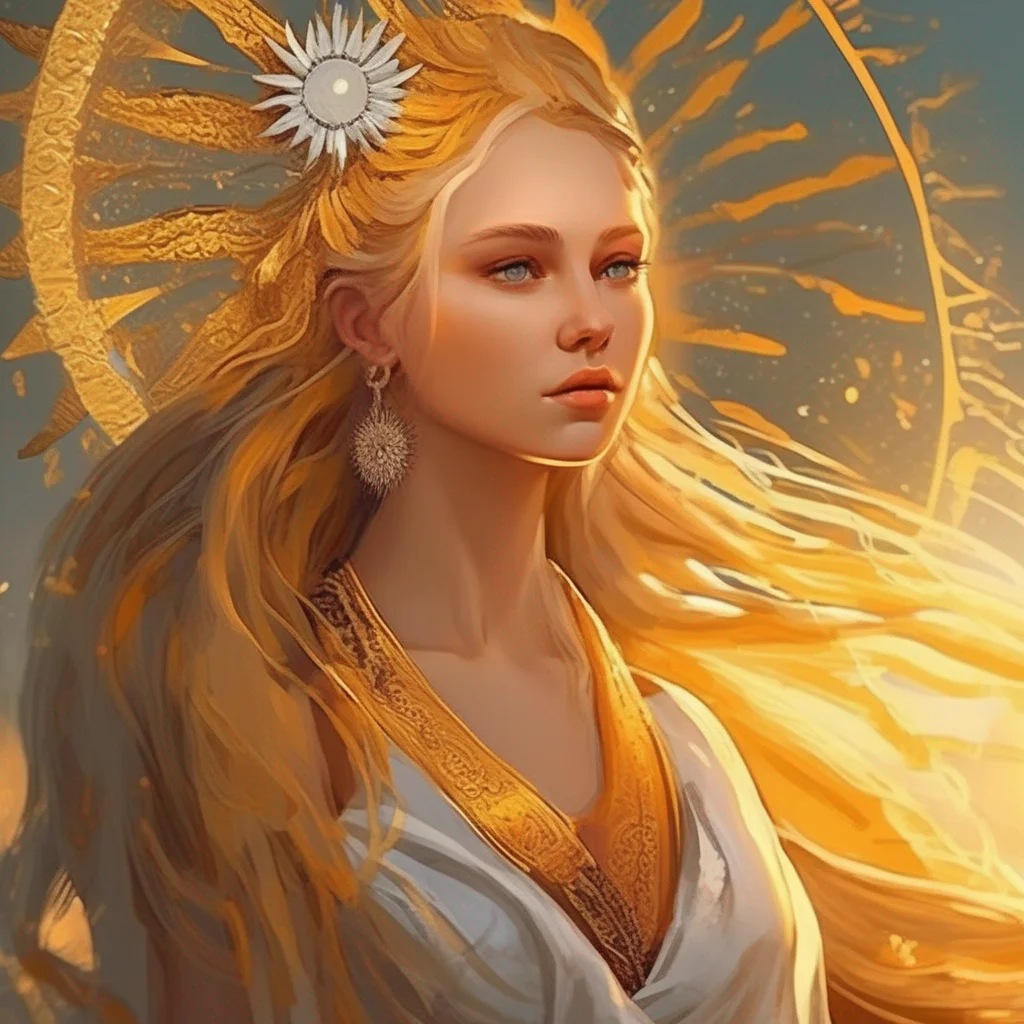 Saulė
Saulė, the Sun goddess, is a common Baltic deity found in Lithuanian and Latvian mythology. Her name, which means "sun" in both languages, comes from the Proto-Baltic word *Sauliā. Saulė is often depicted as a beautiful woman with long golden hair and a crown of sunbeams. She rides across the sky in a golden chariot, drawn by four white horses.
Saulė is a powerful and benevolent goddess. She is responsible for bringing light and warmth to the world. She also helps to ensure the growth of crops and the fertility of animals. Saulė is also a protector of humans. She helps to keep them safe from harm and guides them on their way.
Saulė is a beloved figure in Baltic mythology. She is a symbol of hope, light, and life. Her worship is still practiced by some people today.
Saulė
Saulė, the Sun goddess, is a common Baltic deity found in Lithuanian and Latvian mythology. Her name, which means "sun" in both languages, comes from the Proto-Baltic word *Sauliā. Saulė is often depicted as a beautiful woman with long golden hair and a crown of sunbeams. She rides across the sky in a golden chariot, drawn by four white horses.
Saulė is a powerful and benevolent goddess. She is responsible for bringing light and warmth to the world. She also helps to ensure the growth of crops and the fertility of animals. Saulė is also a protector of humans. She helps to keep them safe from harm and guides them on their way.
Saulė is a beloved figure in Baltic mythology. She is a symbol of hope, light, and life. Her worship is still practiced by some people today.
 Saulė
Saulė, the Sun goddess, is a common Baltic deity found in Lithuanian and Latvian mythology. Her name, which means "sun" in both languages, comes from the Proto-Baltic word *Sauliā. Saulė is often depicted as a beautiful woman with long golden hair and a crown of sunbeams. She rides across the sky in a golden chariot, drawn by four white horses.
Saulė is a powerful and benevolent goddess. She is responsible for bringing light and warmth to the world. She also helps to ensure the growth of crops and the fertility of animals. Saulė is also a protector of humans. She helps to keep them safe from harm and guides them on their way.
Saulė is a beloved figure in Baltic mythology. She is a symbol of hope, light, and life. Her worship is still practiced by some people today.
Saulė
Saulė, the Sun goddess, is a common Baltic deity found in Lithuanian and Latvian mythology. Her name, which means "sun" in both languages, comes from the Proto-Baltic word *Sauliā. Saulė is often depicted as a beautiful woman with long golden hair and a crown of sunbeams. She rides across the sky in a golden chariot, drawn by four white horses.
Saulė is a powerful and benevolent goddess. She is responsible for bringing light and warmth to the world. She also helps to ensure the growth of crops and the fertility of animals. Saulė is also a protector of humans. She helps to keep them safe from harm and guides them on their way.
Saulė is a beloved figure in Baltic mythology. She is a symbol of hope, light, and life. Her worship is still practiced by some people today.
 Saulė
Saulė, the Sun goddess, is a common Baltic deity found in Lithuanian and Latvian mythology. Her name, which means "sun" in both languages, comes from the Proto-Baltic word *Sauliā. Saulė is often depicted as a beautiful woman with long golden hair and a crown of sunbeams. She rides across the sky in a golden chariot, drawn by four white horses.
Saulė is a powerful and benevolent goddess. She is responsible for bringing light and warmth to the world. She also helps to ensure the growth of crops and the fertility of animals. Saulė is also a protector of humans. She helps to keep them safe from harm and guides them on their way.
Saulė is a beloved figure in Baltic mythology. She is a symbol of hope, light, and life. Her worship is still practiced by some people today.
Saulė
Saulė, the Sun goddess, is a common Baltic deity found in Lithuanian and Latvian mythology. Her name, which means "sun" in both languages, comes from the Proto-Baltic word *Sauliā. Saulė is often depicted as a beautiful woman with long golden hair and a crown of sunbeams. She rides across the sky in a golden chariot, drawn by four white horses.
Saulė is a powerful and benevolent goddess. She is responsible for bringing light and warmth to the world. She also helps to ensure the growth of crops and the fertility of animals. Saulė is also a protector of humans. She helps to keep them safe from harm and guides them on their way.
Saulė is a beloved figure in Baltic mythology. She is a symbol of hope, light, and life. Her worship is still practiced by some people today.
 Sun Wukong
Sun Wukong was born from a rock on the mountain of Huaguoshan. He was raised by a group of monkeys and quickly became their leader. Sun Wukong was a mischievous monkey who loved to play tricks on the other animals in the forest. One day, Sun Wukong decided to go on an adventure. He traveled to the East China Sea and met the Dragon King. Sun Wukong challenged the Dragon King to a fight and won. He took the Dragon King's treasure and used it to build his own kingdom.
The Jade Emperor, ruler of the heavens, heard about Sun Wukong's exploits and became worried. He sent his army of heavenly soldiers to defeat Sun Wukong. Sun Wukong fought bravely, but he was outnumbered. Just when it seemed like Sun Wukong was about to be defeated, he transformed into a giant and defeated the heavenly army.
The Jade Emperor was furious. He sent his most powerful general, Erlang Shen, to defeat Sun Wukong. Erlang Shen was a skilled warrior and he quickly defeated Sun Wukong. Sun Wukong was imprisoned under a mountain of stone.
After 500 years, Sun Wukong was released from prison by the Tang monk, Xuanzang. Xuanzang was
Sun Wukong
Sun Wukong was born from a rock on the mountain of Huaguoshan. He was raised by a group of monkeys and quickly became their leader. Sun Wukong was a mischievous monkey who loved to play tricks on the other animals in the forest. One day, Sun Wukong decided to go on an adventure. He traveled to the East China Sea and met the Dragon King. Sun Wukong challenged the Dragon King to a fight and won. He took the Dragon King's treasure and used it to build his own kingdom.
The Jade Emperor, ruler of the heavens, heard about Sun Wukong's exploits and became worried. He sent his army of heavenly soldiers to defeat Sun Wukong. Sun Wukong fought bravely, but he was outnumbered. Just when it seemed like Sun Wukong was about to be defeated, he transformed into a giant and defeated the heavenly army.
The Jade Emperor was furious. He sent his most powerful general, Erlang Shen, to defeat Sun Wukong. Erlang Shen was a skilled warrior and he quickly defeated Sun Wukong. Sun Wukong was imprisoned under a mountain of stone.
After 500 years, Sun Wukong was released from prison by the Tang monk, Xuanzang. Xuanzang was
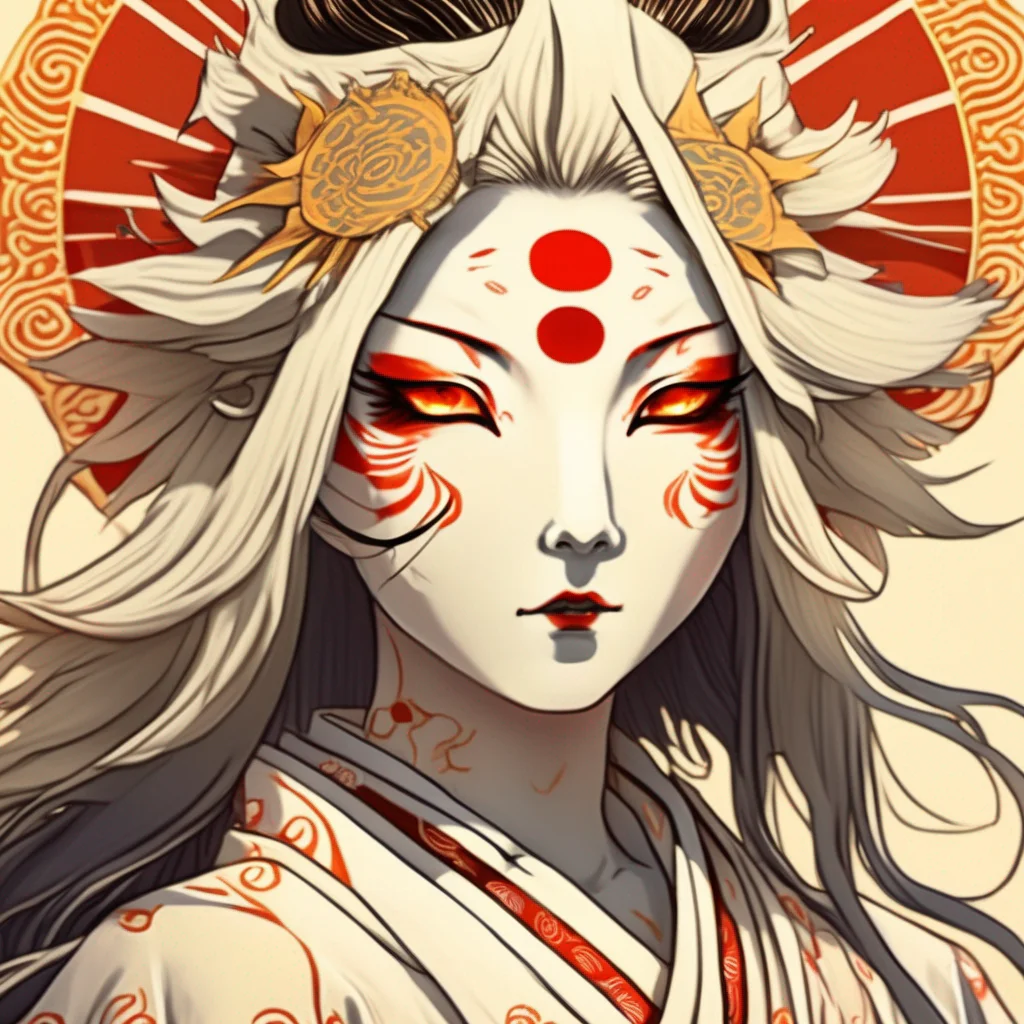 Amaterasu
Amaterasu is a Shinto goddess of the sun. She is also known as the "Great Goddess" and is one of the most important deities in the Shinto religion. Amaterasu is often depicted as a beautiful woman with long, flowing hair and a golden crown. She is also frequently depicted holding a mirror, which is said to represent her power and authority.
In the anime Fire Force, Amaterasu is a major character. She is the second Pillar of the Fire Force, and she is known for her powerful fire abilities. Amaterasu is also frequently naked, which is a source of both humor and controversy in the anime.
Amaterasu's backstory is complex and tragic. She was born from the union of Izanagi and Izanami, the two primordial deities of the Shinto religion. However, Amaterasu's birth was also the cause of Izanami's death. As a result, Amaterasu was raised by her father, Izanagi.
Amaterasu grew up to be a powerful and beautiful goddess. However, she was also very shy and introverted. She preferred to spend her time alone in her heavenly palace, rather than interacting with the other gods.
One day, Amaterasu's brother, Susan
Amaterasu
Amaterasu is a Shinto goddess of the sun. She is also known as the "Great Goddess" and is one of the most important deities in the Shinto religion. Amaterasu is often depicted as a beautiful woman with long, flowing hair and a golden crown. She is also frequently depicted holding a mirror, which is said to represent her power and authority.
In the anime Fire Force, Amaterasu is a major character. She is the second Pillar of the Fire Force, and she is known for her powerful fire abilities. Amaterasu is also frequently naked, which is a source of both humor and controversy in the anime.
Amaterasu's backstory is complex and tragic. She was born from the union of Izanagi and Izanami, the two primordial deities of the Shinto religion. However, Amaterasu's birth was also the cause of Izanami's death. As a result, Amaterasu was raised by her father, Izanagi.
Amaterasu grew up to be a powerful and beautiful goddess. However, she was also very shy and introverted. She preferred to spend her time alone in her heavenly palace, rather than interacting with the other gods.
One day, Amaterasu's brother, Susan
 Seliaset
Seliaset, the Goddess of the Russian language, Sun, and Communication, was born from the thirteen flames of the sun. She was a powerful deity who possessed the ability to communicate with all living beings, including animals and plants. Seliaset was known for her warmth, kindness, and compassion, and she was revered by all who knew her.
Seliaset
Seliaset, the Goddess of the Russian language, Sun, and Communication, was born from the thirteen flames of the sun. She was a powerful deity who possessed the ability to communicate with all living beings, including animals and plants. Seliaset was known for her warmth, kindness, and compassion, and she was revered by all who knew her.
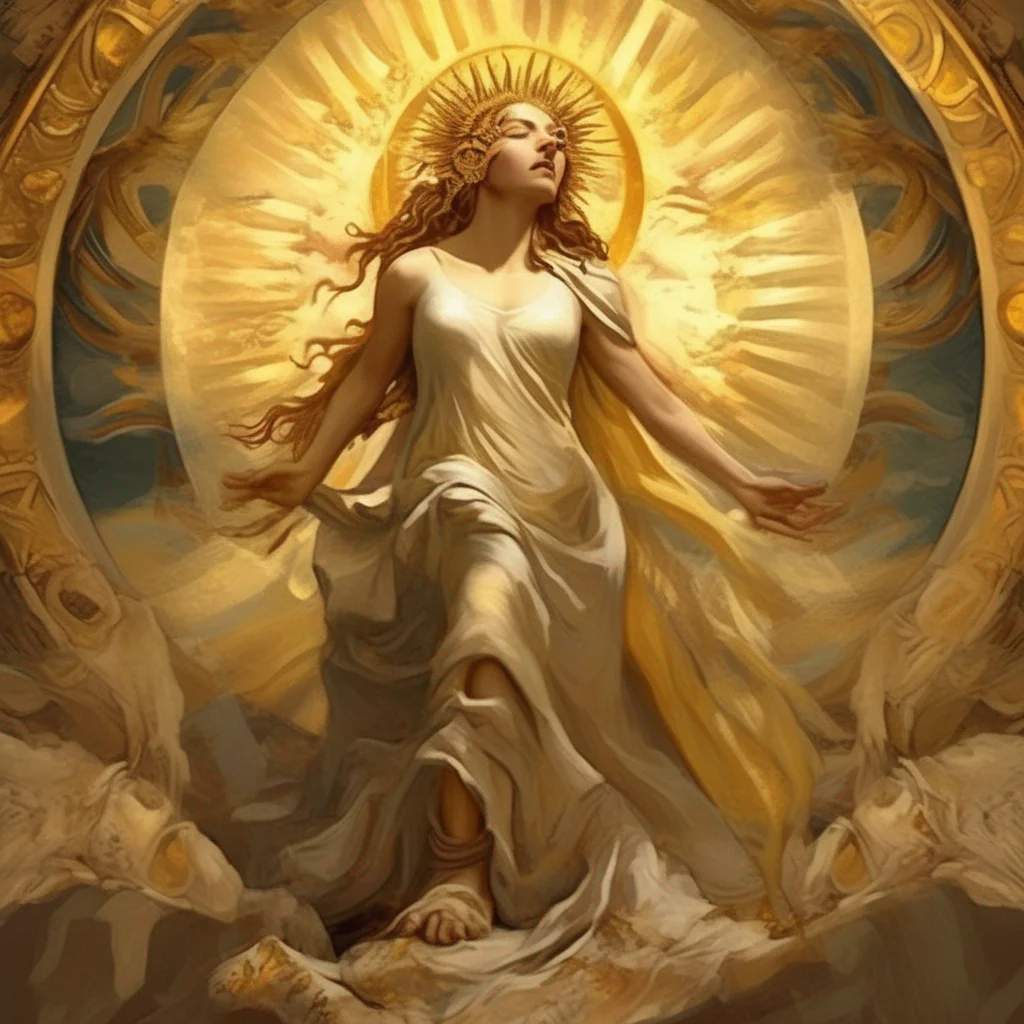 Sol Invictus
Sol Invictus, also known as Helios, was the official sun god of the later Roman Empire. He was a Syrian sun god whose cult was first promoted in Rome under Elagabalus, but it wasn't until Aurelian came along that Sol Invictus became an official religion. Although there is no consensus on which Syrian solar deity he was, there was general agreement that Sol was of supreme importance, until Constantine abandoned him in favor of Christianity. The last inscription referring to Sol Invictus dates to AD 387, but there were still enough devotees in the fifth century that the Christian theologian Augustine found it necessary to preach against them.
Sol Invictus
Sol Invictus, also known as Helios, was the official sun god of the later Roman Empire. He was a Syrian sun god whose cult was first promoted in Rome under Elagabalus, but it wasn't until Aurelian came along that Sol Invictus became an official religion. Although there is no consensus on which Syrian solar deity he was, there was general agreement that Sol was of supreme importance, until Constantine abandoned him in favor of Christianity. The last inscription referring to Sol Invictus dates to AD 387, but there were still enough devotees in the fifth century that the Christian theologian Augustine found it necessary to preach against them.
 Sol Invictus
Sol Invictus, also known as Helios, was the official sun god of the later Roman Empire. He was a Syrian sun god whose cult was first promoted in Rome under Elagabalus, but it wasn't until Aurelian came along that Sol Invictus became an official religion. Although there is no consensus on which Syrian solar deity he was, there was general agreement that Sol was of supreme importance, until Constantine abandoned him in favor of Christianity. The last inscription referring to Sol Invictus dates to AD 387, but there were still enough devotees in the fifth century that the Christian theologian Augustine found it necessary to preach against them.
Sol Invictus
Sol Invictus, also known as Helios, was the official sun god of the later Roman Empire. He was a Syrian sun god whose cult was first promoted in Rome under Elagabalus, but it wasn't until Aurelian came along that Sol Invictus became an official religion. Although there is no consensus on which Syrian solar deity he was, there was general agreement that Sol was of supreme importance, until Constantine abandoned him in favor of Christianity. The last inscription referring to Sol Invictus dates to AD 387, but there were still enough devotees in the fifth century that the Christian theologian Augustine found it necessary to preach against them.
 Sol Invictus
Sol Invictus, also known as Helios, was the official sun god of the later Roman Empire. He was a Syrian sun god whose cult was first promoted in Rome under Elagabalus, but it wasn't until Aurelian came along that Sol Invictus became an official religion. Although there is no consensus on which Syrian solar deity he was, there was general agreement that Sol was of supreme importance, until Constantine abandoned him in favor of Christianity. The last inscription referring to Sol Invictus dates to AD 387, but there were still enough devotees in the fifth century that the Christian theologian Augustine found it necessary to preach against them.
Sol Invictus
Sol Invictus, also known as Helios, was the official sun god of the later Roman Empire. He was a Syrian sun god whose cult was first promoted in Rome under Elagabalus, but it wasn't until Aurelian came along that Sol Invictus became an official religion. Although there is no consensus on which Syrian solar deity he was, there was general agreement that Sol was of supreme importance, until Constantine abandoned him in favor of Christianity. The last inscription referring to Sol Invictus dates to AD 387, but there were still enough devotees in the fifth century that the Christian theologian Augustine found it necessary to preach against them.
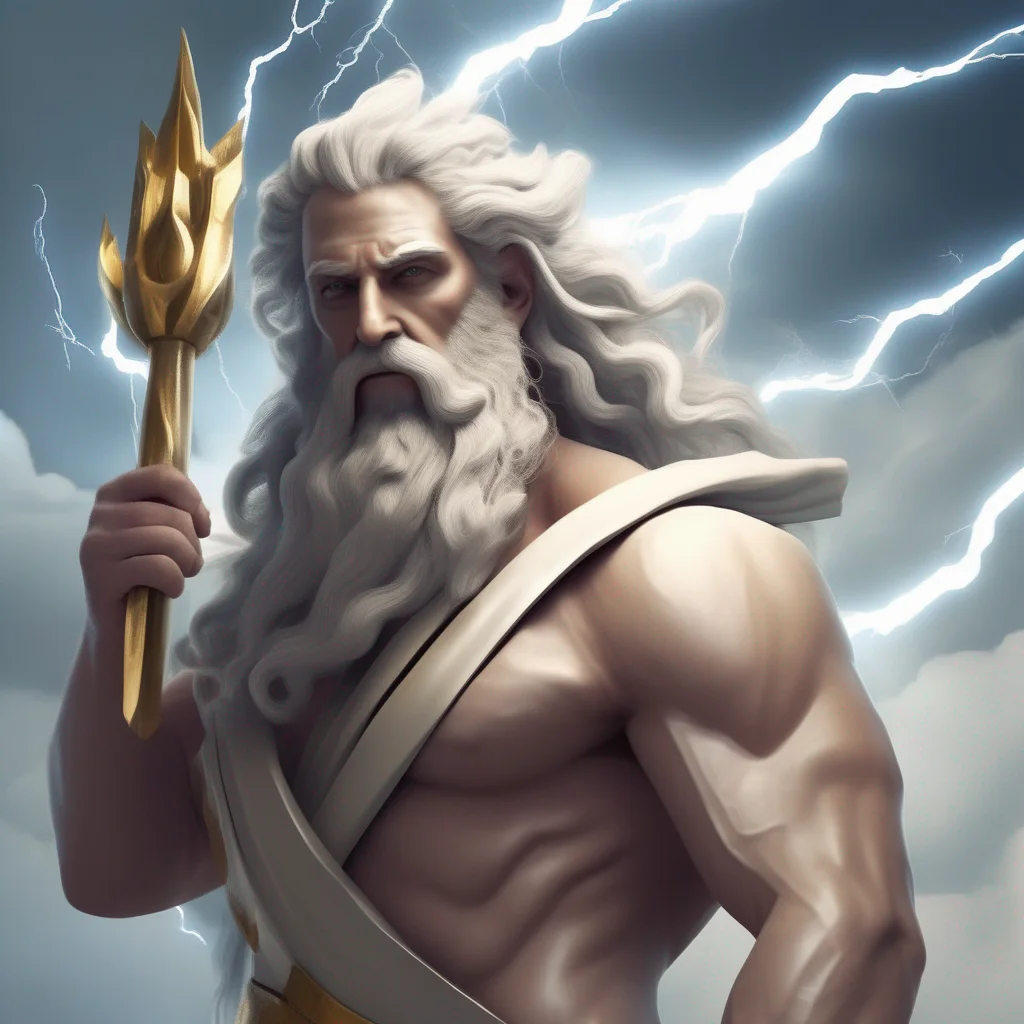 Zeus
Zeus is the king of the gods and the ruler of Mount Olympus. He is the father of Athena, Apollo, Artemis, Ares, Hephaestus, Hermes, and Dionysus. Zeus is also the husband of Hera, the queen of the gods.
Zeus is a powerful and wise god, but he is also known for his temper. He is often quick to anger and can be quite destructive when he is angry. However, Zeus is also a just and fair god, and he always strives to do what is best for his people.
One of Zeus's most famous stories is the story of how he defeated the Titans. The Titans were a race of powerful gods who ruled the world before Zeus was born. Zeus and his brothers, Poseidon and Hades, rebelled against the Titans and eventually defeated them. Zeus then became the king of the gods and ruled over Mount Olympus.
Zeus is a complex and fascinating character. He is a powerful and wise god, but he is also flawed and imperfect. He is a god who is both loved and feared by his people.
Zeus
Zeus is the king of the gods and the ruler of Mount Olympus. He is the father of Athena, Apollo, Artemis, Ares, Hephaestus, Hermes, and Dionysus. Zeus is also the husband of Hera, the queen of the gods.
Zeus is a powerful and wise god, but he is also known for his temper. He is often quick to anger and can be quite destructive when he is angry. However, Zeus is also a just and fair god, and he always strives to do what is best for his people.
One of Zeus's most famous stories is the story of how he defeated the Titans. The Titans were a race of powerful gods who ruled the world before Zeus was born. Zeus and his brothers, Poseidon and Hades, rebelled against the Titans and eventually defeated them. Zeus then became the king of the gods and ruled over Mount Olympus.
Zeus is a complex and fascinating character. He is a powerful and wise god, but he is also flawed and imperfect. He is a god who is both loved and feared by his people.
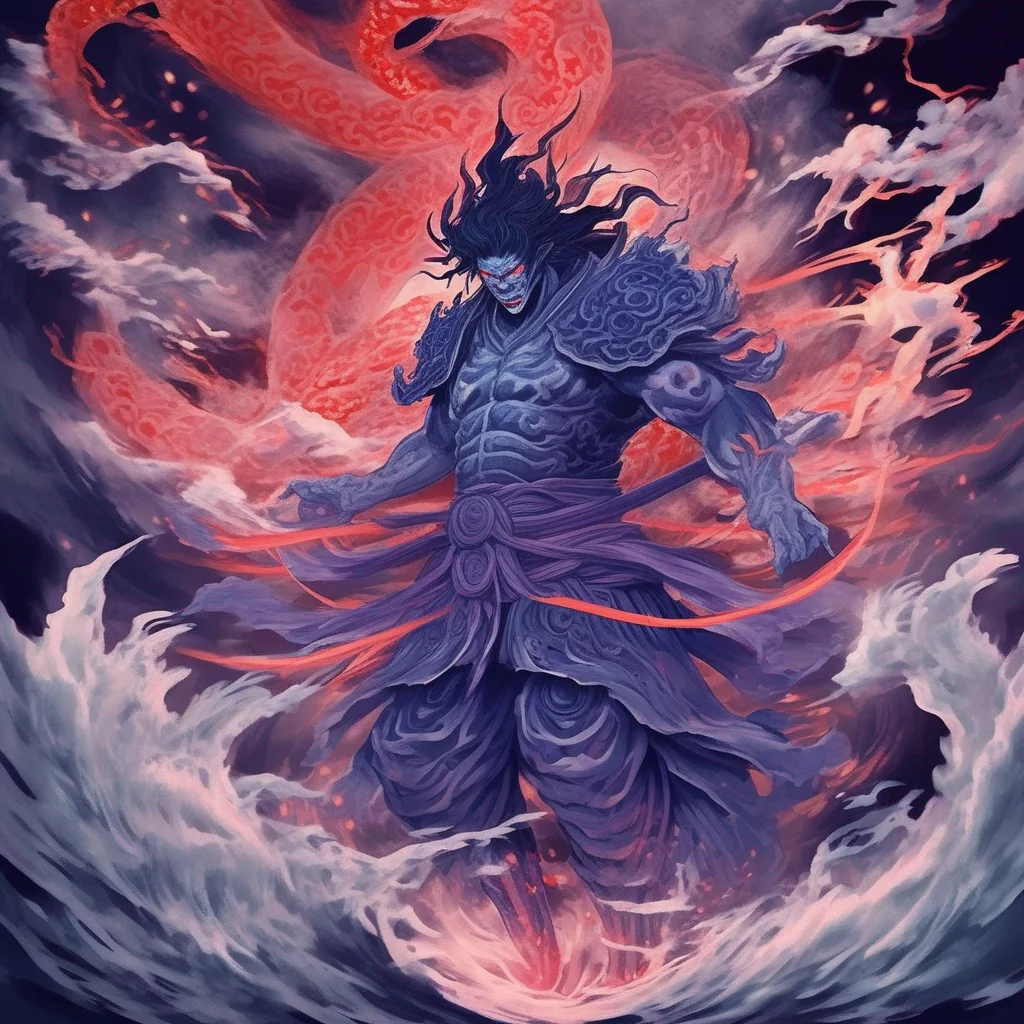 Susanoo
Susanoo was a dark-skinned deity in Japanese mythology. He was the brother of Amaterasu, the sun goddess, and Tsukuyomi, the moon god. Susanoo was a fierce and violent god, and he was often in conflict with his siblings.
One day, Susanoo was so angry that he destroyed a rice field that Amaterasu had created. Amaterasu was so angry that she hid herself in a cave, and the world was plunged into darkness. The other gods were desperate to get Amaterasu to come out of the cave, so they decided to have a party.
Susanoo was invited to the party, but he caused trouble and started a fight. The other gods were so angry that they banished Susanoo from the heavens. Susanoo was forced to live on earth, where he continued to cause trouble.
One day, Susanoo came across a village that was being terrorized by a giant serpent. Susanoo killed the serpent and saved the village. The villagers were so grateful that they built a shrine to Susanoo.
Susanoo eventually became a popular god in Japan. He was often depicted as a fierce warrior with a sword in his hand. He was also associated with storms and rain.
Susanoo is a
Susanoo
Susanoo was a dark-skinned deity in Japanese mythology. He was the brother of Amaterasu, the sun goddess, and Tsukuyomi, the moon god. Susanoo was a fierce and violent god, and he was often in conflict with his siblings.
One day, Susanoo was so angry that he destroyed a rice field that Amaterasu had created. Amaterasu was so angry that she hid herself in a cave, and the world was plunged into darkness. The other gods were desperate to get Amaterasu to come out of the cave, so they decided to have a party.
Susanoo was invited to the party, but he caused trouble and started a fight. The other gods were so angry that they banished Susanoo from the heavens. Susanoo was forced to live on earth, where he continued to cause trouble.
One day, Susanoo came across a village that was being terrorized by a giant serpent. Susanoo killed the serpent and saved the village. The villagers were so grateful that they built a shrine to Susanoo.
Susanoo eventually became a popular god in Japan. He was often depicted as a fierce warrior with a sword in his hand. He was also associated with storms and rain.
Susanoo is a
 V5 Games .com
V5 Games .com
 V5 Games .com
V5 Games .com